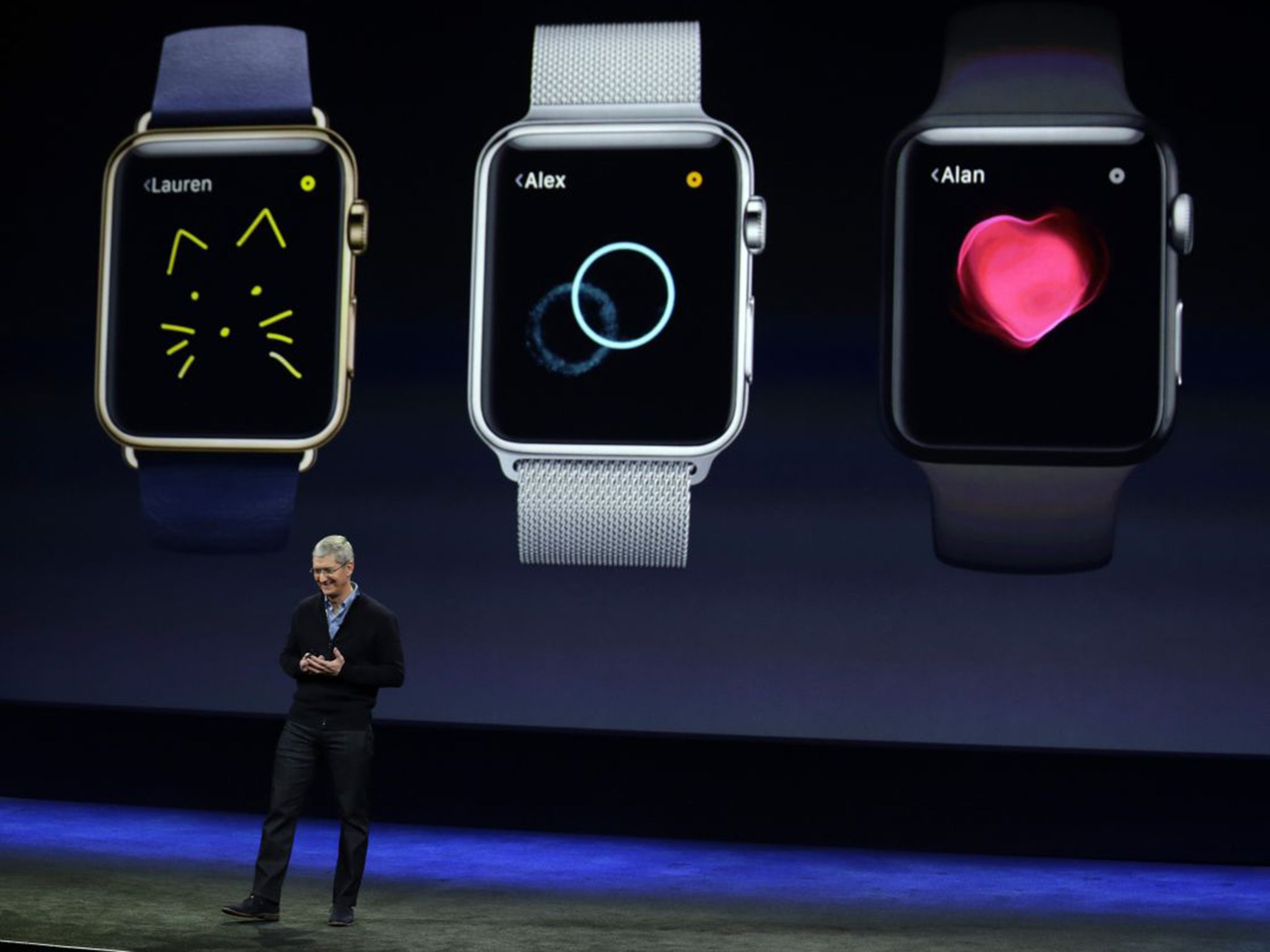Apple Watch: taptic engine, force touch and all the other words Apple wants to teach you
Apple has a tendency to invent new words as well as new products, and it’s expanding its dictionary with the Apple Watch

Your support helps us to tell the story
From reproductive rights to climate change to Big Tech, The Independent is on the ground when the story is developing. Whether it's investigating the financials of Elon Musk's pro-Trump PAC or producing our latest documentary, 'The A Word', which shines a light on the American women fighting for reproductive rights, we know how important it is to parse out the facts from the messaging.
At such a critical moment in US history, we need reporters on the ground. Your donation allows us to keep sending journalists to speak to both sides of the story.
The Independent is trusted by Americans across the entire political spectrum. And unlike many other quality news outlets, we choose not to lock Americans out of our reporting and analysis with paywalls. We believe quality journalism should be available to everyone, paid for by those who can afford it.
Your support makes all the difference.Apple isn’t just a technological innovator, but a lexicological one too — it makes up more new words than products. It’s done the same for the Apple Watch, creating a whole new vocabulary to describe the magical and revolutionary device.
While Apple’s words often look odd at the beginning, they do tend to describe new features, and so it’s probably useful that Apple is so keen on making them up. Retina displays, multi-touch and Siri all didn’t make much sense before Apple thrust them upon us, but are now part of our daily lives.
We picked through the complicated vocabulary of the new Apple Watch announcement, so that you can tell what people are on about when they start enthusing about the company’s new wearable.
Taptic Engine
Using a small motor, the watch can buzz on your wrist if it wants to alert you to something. (The name is a play on haptic, the word for touch interaction.)
It’s one of the many ways that the watch can tell you about notifications, which will also be announced using sound. And it also enables some of the communication technologies in the watch, like allowing users to send taps to other watch-wearers and allow the watch to beat in time with somebody else’s heartbeat.
Force Touch
Apparently one of Apple’s big plans — it’s been integrated into the MacBook and will probably be coming to the next iPhone — Force Touch allows the watch to tell whether it’s being pressed hard or soft.
That’s extra-important on the Apple Watch because the screen is so small and inputs are reduced. Force Touch adds an extra way to tell the watch what you want to happen. Apple says that it is the “most significant new sensing capability since Multi‑Touch” — which, incidentally, the iPhone doesn’t have, so there’s no pinch to zoom.
Watch OS
The operating system in the watch looks much like iOS, but is different in important ways. It has a different, more legible typeface and is made to be easier to look at and control. Menus are built around the small screen and limited inputs, and the interface is designed mostly using images rather than text.
Glances
These are supposed to be quick ways of getting information. In this view, everything is made to fit into one screen and is intended to be able to be understood in just one quick look.
Glances can link to the apps themselves — allowing you to click on anything that’s interesting or important and get through to the full version of the app.
Digital crown
A crown is the dial on a watch that you wind to power it up and change the time. On the Apple Watch, that’s digital — and one of the ways that Apple says its watch stands out from others.
The Digital Crown is one of the main ways of interacting with the watch. Spinning it tells it to scroll through lists or zoom, depending on the context. And it also works as a button, taking you back to the home screen like the one on the bottom of the iPhone.
MagSafe
This will be familiar to MacBook users already, but MagSafe is the charging technology that allows the wire to connect to the watch using only magnets, so that it can be snapped on and off easily. That means that it has no port – so there’s no fumbling around trying to get the charger into a small hole – and tripping over the cord won’t bring the watch tumbling to the ground.
(Oddly, given that Apple has emphasises MagSafe in the watch, it was actually removed from the newest MacBook at the same event.)
Sapphire glass
This is the glass found on the face of most Apple Watches, but not the Sport. It’s the hardest transparent material around, and will hopefully keep the watch from getting nicked and scratched as it’s used.
On the Sport, Apple uses a strengthened glass.
Join our commenting forum
Join thought-provoking conversations, follow other Independent readers and see their replies
Comments